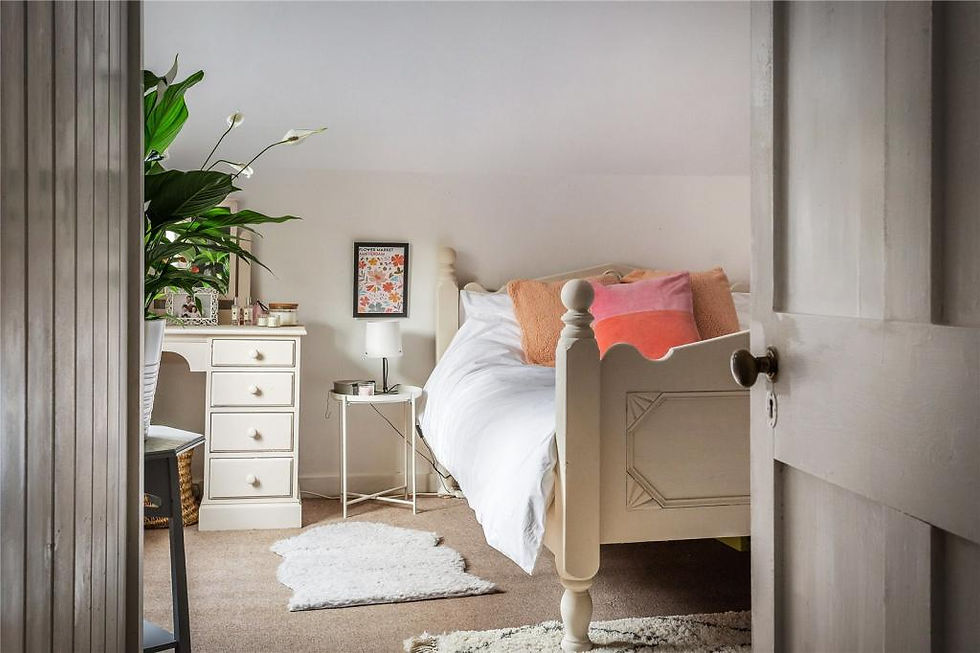What to Expect When Hiring a Professional Architecture Photographer
- James Morris

- Oct 14
- 4 min read
When it comes to showcasing buildings and structures, the quality of photography can make all the difference. Hiring a professional architectural photographer ensures that your property or project is captured in the best possible light. But what exactly should you expect from this process? This guide will walk you through the key aspects of working with an expert in architectural photography, helping you understand the value they bring and how to prepare for a successful shoot.
Understanding the Role of an Architectural Photographer
An architectural photographer specialises in capturing images of buildings, interiors, and other structures. Their goal is to highlight the design, form, and function of the architecture in a way that is both visually appealing and informative. Unlike general photography, this niche requires a deep understanding of angles, lighting, and composition to accurately represent the subject.
Professional architecture photographers use specialised equipment such as tilt-shift lenses to correct perspective distortion and drones for aerial shots. They also have a keen eye for detail, ensuring that every line and curve is perfectly framed.
When hiring an architecture photographer, expect them to:
Discuss your project goals and the intended use of the images.
Visit the site beforehand to plan the shoot.
Use advanced techniques to manage natural and artificial lighting.
Deliver high-resolution images suitable for print and digital media.

How to Choose the Right Architectural Photographer
Selecting the right professional is crucial for achieving the desired results. Here are some practical tips to help you make an informed decision:
Review Their Portfolio
Look for a portfolio that demonstrates versatility and expertise in different types of architecture. Pay attention to the quality of lighting, composition, and attention to detail.
Check Experience and Specialisation
Some photographers specialise in residential buildings, while others focus on commercial or historical architecture. Choose one whose experience aligns with your project.
Discuss Your Vision
A good photographer will listen to your ideas and offer suggestions to enhance the final images. Clear communication is key to a successful collaboration.
Understand Pricing and Deliverables
Clarify what is included in the price, such as the number of images, editing services, and usage rights.
Look for Professionalism and Reliability
Timeliness, responsiveness, and a professional attitude are important qualities to ensure a smooth process.
By following these steps, you can find a photographer who not only meets your technical needs but also understands your creative vision.

What is Architecture Photography?
This genre focuses on capturing the aesthetics and functionality of buildings and structures. It encompasses various subcategories, including:
Exterior Photography: Images of the building’s outside, highlighting design and context.
Interior Photography: Showcasing the inside spaces, materials, and lighting.
Aerial Photography: Using drones or helicopters to capture buildings from above.
Detail Photography: Close-ups of architectural elements like textures, patterns, and materials.
The term "architectural photography" covers all these aspects and is widely used in the industry. Professionals in this field combine technical skills with artistic vision to create images that tell a story about the architecture.

Preparing for Your Architecture Photography Session
Preparation is key to a successful photo shoot. Here are some actionable recommendations to help you get ready:
Clean and Declutter the Space
Ensure that the building or area is tidy and free of unnecessary items that could distract from the architecture.
Schedule the Shoot for Optimal Lighting
Natural light plays a significant role in architectural photography. Early morning or late afternoon often provides the best light.
Coordinate Access and Permissions
Make sure the photographer has access to all areas that need to be photographed, including rooftops or restricted zones.
Communicate Specific Requirements
If you need images for marketing, publications, or portfolios, inform the photographer so they can tailor their approach.
Consider Additional Services
Some photographers offer post-processing, virtual tours, or 3D imaging. Discuss these options if they are relevant to your project.
By taking these steps, you help the photographer capture the architecture in its best form, saving time and ensuring high-quality results.
The Benefits of Hiring Professional Architectural Photography Services
Investing in professional architectural photography services can significantly enhance the presentation of your property or project. Here are some key benefits:
High-Quality Images That Stand Out
Professional photographers use advanced equipment and techniques to produce sharp, well-composed images.
Accurate Representation of Design
They understand how to showcase architectural features without distortion or misrepresentation.
Improved Marketing and Sales
Stunning visuals attract more attention from potential buyers, clients, or tenants.
Enhanced Brand Image
For architects and developers, professional photos reflect the quality and professionalism of their work.
Time and Effort Savings
Hiring an expert means you don’t have to worry about technical details or editing.
Ultimately, professional architectural photography is an investment that pays off by elevating the perception and value of your architecture.
What Happens After the Photo Shoot?
Once the shoot is complete, the photographer will typically:
Review and select the best images.
Perform post-processing to enhance colours, correct distortions, and remove imperfections.
Deliver the final images in agreed formats and resolutions.
Provide usage rights and licensing information.
It is common to receive proofs or drafts for review before final delivery. This allows you to request minor adjustments or additional edits.
Maintaining clear communication during this phase ensures that the final product meets your expectations and can be used effectively for your intended purpose.
Hiring a professional architecture photographer is a strategic decision that can transform how your building or project is perceived. By understanding their role, preparing adequately, and choosing the right expert, you can achieve stunning images that highlight the beauty and functionality of your architecture. Whether for marketing, documentation, or personal satisfaction, professional photography services offer unmatched value and quality.




Comments